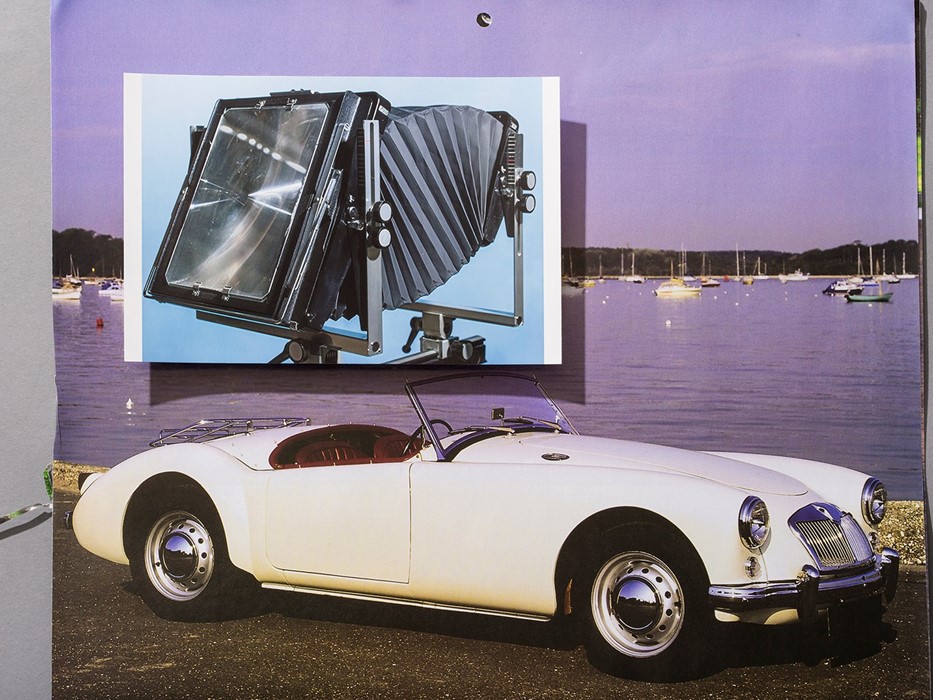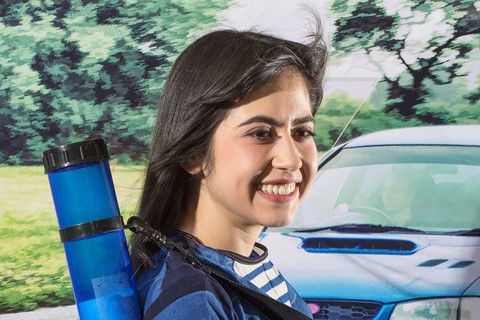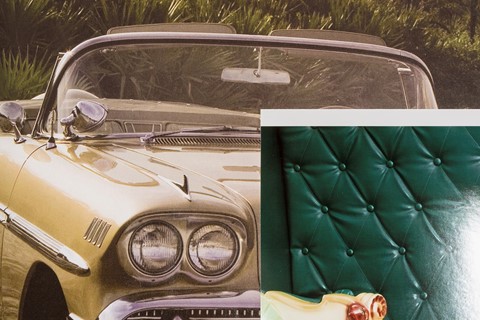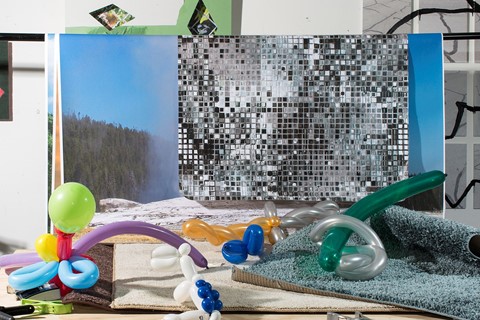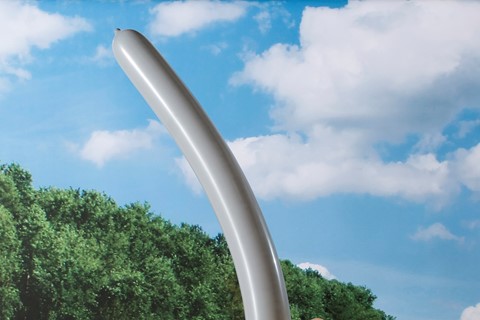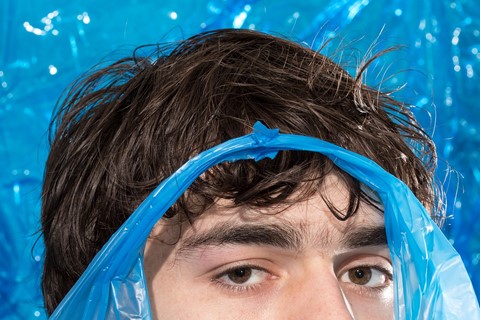Brooklyn-based photographer David Brandon Geeting presents Amusement Park, a crazy and chaotic new publication tracing the madness of our modern age
The world of Brooklyn-based photographer David Brandon Geeting is teetering on the cusp of dystopian chaos – a microcosm of the times in which we’re living; messy, technicoloured, anxious and arcane. His latest book, entitled Amusement Park and published by Lodret Vandret, was inspired by visits to two amusement parks in the US, shot over the course of two years. Needless to say, Geeting’s hybrid style comes at you full throttle throughout it.
A mixture of studio portrait photography, still lifes, documentary and photoshop, flipping through the book’s pages – printed, to mirror the artist’s fickle nature, on four different paper stocks – you’re never quite sure what’s real and what’s not. “That makes my book sounds like Bladerunner, which I am a fan of,” laughs Geeting at this interpretation. “I don’t know if that’s what I was going for, but if that’s how it reads, then maybe it’s the truth.” AnOther talked to the photographic artist to find out more.
On the connection between his work and amusement parks…
“My friend told me my work reminded him of an amusement park. I started to think more about them, and the similarities they hold to my work; they are both shiny, colourful façades for something much seedier. There’s a lot of energy at amusement parks but it’s sort of a nervous energy. I think my work is pretty nervous. It looks more put together if you squint your eyes and look at it – you can’t see all the loose ends. Like when the drugs start wearing off and you’re coming back to your senses things are still a bit skewed. They aren’t as glossed over, and you start to see the imperfections in what you thought was pure bliss. But there’s still a hint of fantasy left to cling to.”
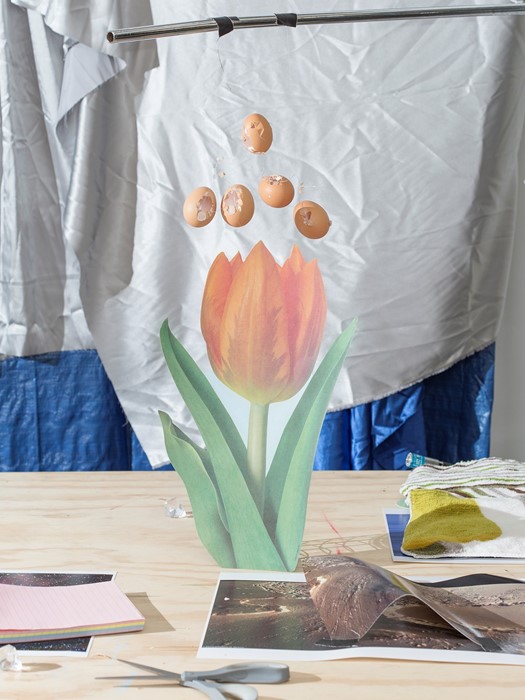
On personal memories…
“The first amusement park I visited was boardwalk in Wildwood, New Jersey. A big pier with a few rollercoasters, a ton of arcade games, overpriced carnival food, airbrushed T-shirts, and teenagers trying to get laid. As a kid, I really loved the rides. I couldn’t believe they were real. Now I like to sit back and watch the mayhem ensue. I also like to people-watch.”
On how he shot the series…
“The pictures were taken over a two year period from 2014 to 2016. I approached the image-making process in a variety of different ways: I went to two amusement parks and took documentary photos; I composed still lifes in my studio; I had people sit for portraits; and I compiled a bunch of street photos that I thought fit the vibe of the project. In general, my work always tries to make connections between things that are otherwise disparate. I get bored easily and I think the work reflects that.”
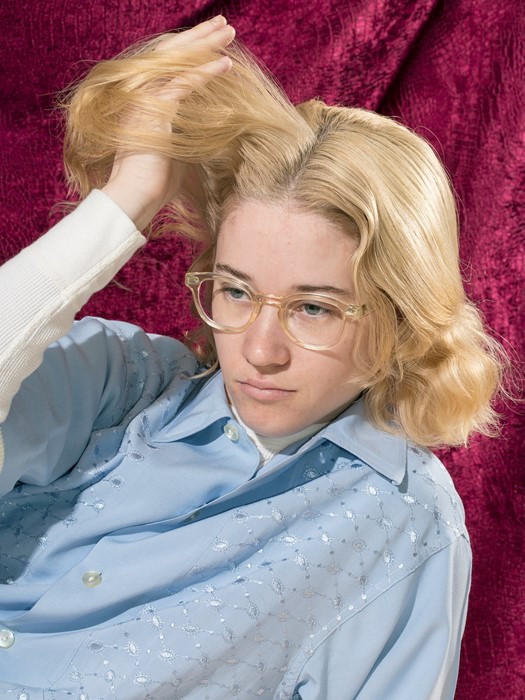
On presenting the photographs for the printed page…
“When I spoke to the publisher, Lodret Vandret, about the idea for the book, the first thing they expressed was their concern about replicating my work exactly as it’s seen on-screen. They knew me as an ‘internet artist’ and they didn’t want to make a book that looks like the internet. They wanted it to be an art object on its own terms. After a few months of brainstorming and trying out different layouts with designer Brian Paul Lamotte, we eventually settled on breaking the book up into a few different mini-series. For instance, the images of playground equipment got their own glossy section in the centre of the book, printed with fluorescent ink. The car collages were spread throughout the book at equal distance from one another, all printed with a special three-colour process on recycled paper. To be completely honest, I am not usually concerned with these sorts of technicalities, but I’m glad the people making my book cared enough to put in the extra effort and make it as special as it could be.”
On fusing photographic styles…
“I get inspired easily and frequently. My favourite images are ones that weren’t supposed to be ‘good’ or ‘concept-heavy’ but rather ones that are innocent and happen to be strange by accident. I like stock images of people forcing themselves to smile. I like hobbyist photographer Flickr accounts. I like advertisements on public-access TV. The fusion of styles I achieve in my pictures happens more easily when I give up. When I accept the images for what they are and let them mingle with one another, that’s when the magic happens. If I try to use my best ‘curation’ skills and neatly organise them into separate worlds, well... I can’t think of anything more boring.”
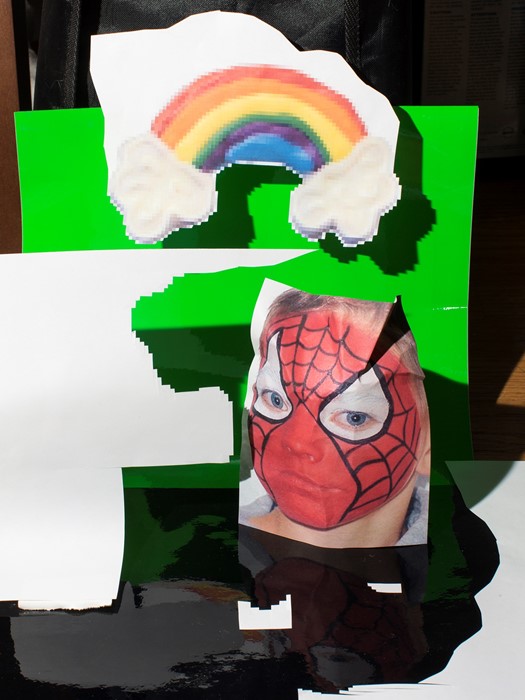
Amusement Park by David Brandon Geeting is out now, published by Lodret Vandret.
